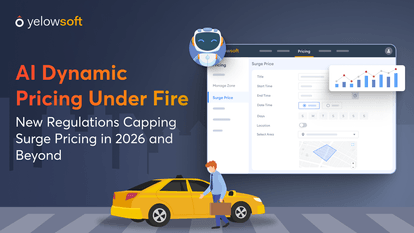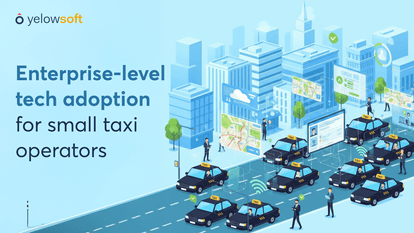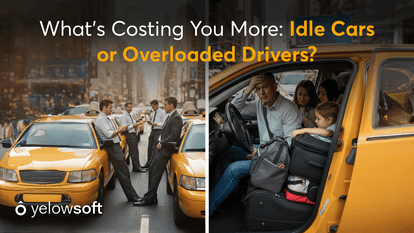The world of urban mobility is changing faster than anyone expected. In 2023, the global ride hailing and taxi market was valued at 106.66 billion dollars and is projected to grow to 480.09 billion dollars by 2032. (Source)
This incredible growth is not just about more people taking rides. It is about how technology and sustainability are coming together to redefine the industry.
There is an old proverb that says, “The best time to plant a tree was 20 years ago. The second-best time is now.”
The same wisdom applies to AI in urban taxi services and EVs in urban taxi services. The best time to start was yesterday, but the next best time is today.
In this blog, you will discover how AI is making ride booking smarter, how EVs are cutting costs and emissions, real case studies of operators scaling faster, and practical steps you can take right now to future-proof your taxi business.
Why This Shift Matters Now
If you are a taxi operator, you probably see changes around you already.
Cities are pushing for greener fleets, passengers are asking for cleaner rides, and competitors are finding ways to move faster. This is not just a trend. It is a permanent shift.
In 2023 alone, 14 million electric cars were sold worldwide, representing 18% of new car sales. That number is projected to cross 20% this year. (Source)
Meanwhile, the market for AI in transportation is forecasted to reach 11.3 billion dollars by 2030. Those numbers tell us one thing: the future belongs to operators who adapt early. (Source)
“AI and EVs are not just trends, they are defining the next decade of urban mobility. For taxi operators, adopting them early means stronger business resilience and customer loyalty,” said Shahid Mansuri, CEO of Yelowsoft.
How AI is Transforming Taxi Dispatch and Operations
Think about how rides were managed in the past. Customers called a number, a dispatcher picked up, and a driver was manually assigned.
That was slow, stressful, and prone to errors. Now picture a world where everything is instant, accurate, and reliable. That is the power of AI in urban taxi services.
AI powered booking and dispatch
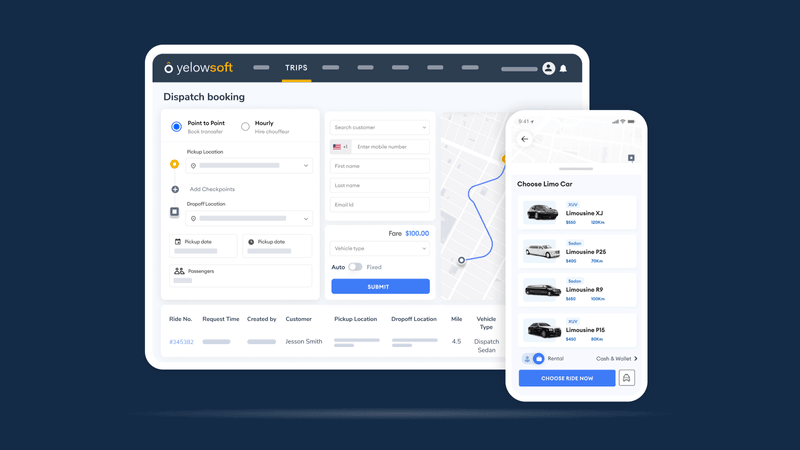
When a customer requests a ride, the system does not just pick the nearest driver. It calculates traffic, driver ratings, availability, and even predicted demand. This is AI based ride booking at work.
For example, Tugu, a UK based towing and taxi company, switched to Yelowsoft’s AI dispatch suite.
The result? 30% more ride requests handled and a 40% boost in customer satisfaction.
Predictive demand forecasting
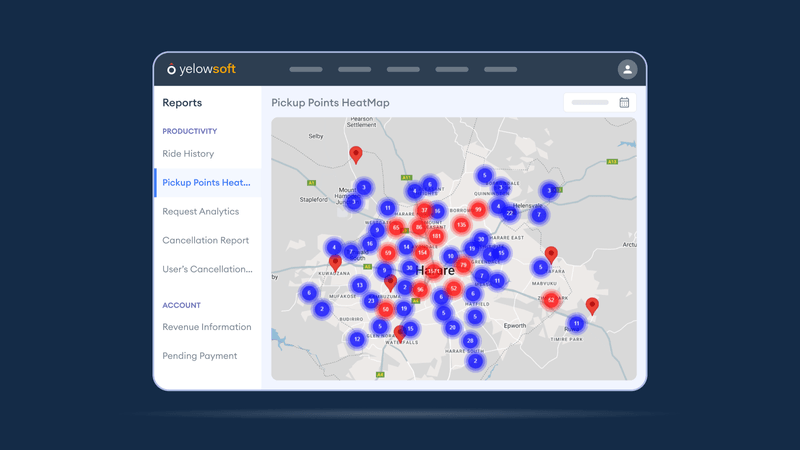
AI also learns patterns. It knows when airports will be busy, when concerts will end, or when bad weather will hit.
By positioning drivers in the right places ahead of time, it cuts waiting times and increases earnings. It is no surprise that analysts predict AI in transportation will exceed 11 billion dollars by 2030.
Enhancing passenger and driver experience
When rides are faster and smoother, passengers are happier. When assignments are optimized, drivers earn more and waste less time.
AI does not just make dispatch smarter. It makes the entire system more human-friendly.
Read More: AI & ML Solving Key Challenges of Taxi Businesses
The Role of EVs in Greener, Cost-Effective Taxi Services
If AI is making services smarter, EVs are making them greener and more affordable.
Think about how much you spend on fuel and maintenance every month. Now imagine cutting that by a third or more. That is the promise of EVs in urban taxi services.
Lower operating costs
Electric vehicles cost more upfront, but they save money long term.
No fuel expenses, fewer breakdowns, and less frequent servicing. Studies show fully electrified taxi fleets can cut emissions by up to 77% compared to traditional vehicles.
Passenger appeal
Many passengers now prefer EV rides. They are quieter, smoother, and better for the environment.
For eco-conscious riders, choosing an EV taxi is about values as much as convenience. That makes EV adoption a smart business move.
Regulatory goodwill
Governments are encouraging operators to go green with subsidies and incentives. Dubai has announced ambitious goals to make a quarter of its trips electric or autonomous by 2030.
For operators, adopting the right software for EV taxis helps meet these requirements while staying competitive.
Real Case Study: How Tugu Scaled with AI Dispatch
Talking about theory is one thing. Seeing it in practice is another.
Tugu, a UK based towing and taxi provider, faced major challenges with slow manual dispatch. Customers were waiting too long, and drivers were losing opportunities.
By partnering with Yelowsoft, Tugu adopted AI-powered dispatch. Every ride request was automatically matched with the right driver in real time. The results were stunning:
- 30% more ride requests handled
- 40% increase in customer satisfaction
- 100% AI-based driver assignment
This success story shows how even traditional operators can upgrade quickly and efficiently with AI and EV-ready solutions.
Read More: Tugu’s Ride Dispatch Success Story: 30% More Towing Requests, 40% Higher Satisfaction
What Taxi Operators Should Do Today
You do not need to wait for fleets of self-driving cars or for every vehicle to be electric. You can start right now.
Begin with AI based ride booking to improve dispatch efficiency. Then, as incentives and infrastructure grow, bring EVs into your fleet with the right software for EV taxis.
Cloud-based platforms like Yelowsoft make this journey simple. You can adopt AI today and expand into EVs tomorrow, without making huge upfront investments.
See how Yelowsoft helps operators adopt AI and EV strategies.
Free Resource for Operators
To support this transition, Yelowsoft has created a free guide: “5 Steps to Prepare Your Taxi Business for AI and EV Integration.”
This checklist helps you evaluate your current system, plan the shift, and get ahead of your competitors.
Conclusion
The taxi industry stands at the edge of a major transformation. Technology and sustainability are no longer optional; they are the driving forces shaping tomorrow’s success.
By adopting AI in urban taxi services, operators can deliver faster, smarter, and more reliable rides that keep passengers coming back.
At the same time, embracing EVs in urban taxi services lowers operating costs, enhances customer satisfaction, and aligns fleets with global sustainability goals.
Together, AI and EVs are not passing trends but the foundation of future-ready mobility. The question isn’t if you should adapt, but how soon you’ll take the first step.
Future-proof your taxi business with AI and EV readiness.
FAQs
AI in urban taxi services improves operations by predicting demand, assigning drivers more intelligently, and reducing passenger wait times. This means faster pickups, happier customers, and higher driver earnings. By making dispatch smarter, operators can run more efficient, customer-focused businesses.
The biggest advantages of EVs in urban taxi services are reduced fuel costs, lower maintenance, and a significant cut in carbon emissions. EVs can lower emissions by up to 70% while offering quieter, smoother rides that passengers love. This combination strengthens customer loyalty and builds a sustainable brand image.
Yes. Small operators can easily adopt AI based ride booking through cloud-based dispatch systems without high upfront costs. These platforms allow businesses to start small, scale gradually, and add advanced features as they grow while keeping expenses manageable.
The right software for EV taxis helps operators manage charging schedules, plan routes efficiently, and monitor vehicle health. This ensures drivers avoid downtime, fleets save money, and operators remain compliant with green regulations while maintaining excellent service quality.
Not immediately. Taxi businesses can begin with AI in urban taxi services to improve dispatch efficiency today and gradually adopt EVs in urban taxi services as infrastructure expands. Starting step by step ensures operators remain competitive while preparing for a sustainable, tech-driven future.

